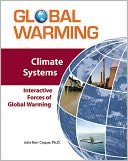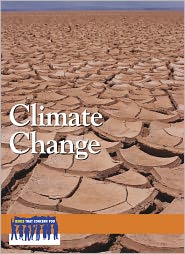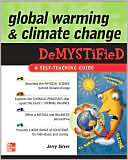The main text in black is the complete text of Berlinski's article as published on his site at the Discovery Institute. My comments are enclosed in square brackets and
[colored blue].
ALL THOSE DARWINIAN DOUBTS (
http://www.discovery.org/scripts/viewDB/index.php?command=view&printerFriendly=true&id=2450)
By: David Berlinski
Wichita Eagle
March 9, 2005
Original Article
NOTE: The article below is the full version by Dr. Berlinski. The Wichita Eagle opted to shorten the piece to only 400 words.
The defense of Darwin's theory of evolution has now fallen into the hands of biologists who believe in suppressing criticism when possible and ignoring it when not. It is not a strategy calculated in induce confidence in the scientific method. A paper published recently in the Proceedings of the Biological Society of Washington concluded that the events taking place during the Cambrian era could best be understood in terms of an intelligent design—hardly a position unknown in the history of western science. The paper was, of course, peer-reviewed by three prominent evolutionary biologists. Wise men attend to the publication of every one of the Proceeding's papers, but in the case of Steven Meyer's "The origin of biological information and the higher taxonomic categories," the Board of Editors was at once given to understand that they had done a bad thing. Their indecent capitulation followed at once.
[Detailed coverage of the incident can be found at http://en.wikipedia.org/wiki/Sternberg_peer_review_controversy]
Publication of the paper, they confessed, was a mistake. It would never happen again. It had barely happened at all. And peer review?
The hell with it.
"If scientists do not oppose antievolutionism," Eugenie Scott, the Executive Director of the National Center for Science Education, remarked, "it will reach more people with the mistaken idea that evolution is scientifically weak." Scott's understanding of "opposition" had nothing to do with reasoned discussion. It had nothing to do with reason at all. Discussing the issue was out of the question. Her advice to her colleagues was considerably more to the point: "Avoid debates."
Everyone else had better shut up.
In this country, at least, no one is ever going to shut up, the more so since the case against Darwin's theory retains an almost lunatic vitality.
Look — The suggestion that Darwin's theory of evolution is like theories in the serious sciences — quantum electrodynamics, say — is grotesque. Quantum electrodynamics is accurate to thirteen unyielding decimal places. Darwin's theory makes no tight quantitative predictions at all.
[Evolution is an historical science, http://www.stephenjaygould.org/library/gould_fact-and-theory.html, the discovery of tiktaalik is one recent and well publicized example of a prediction made on the basis of evolution. The entire field of genetics is support for the fact that all current species descended from earlier ones, going back to a common ancestor.]
Look — Field studies attempting to measure natural selection inevitably report weak to non-existent selection effects.
[This is blatantly false. 1. Lenski's experiment: http://en.wikipedia.org/wiki/E._coli_long-term_evolution_experiment; 2. Observations of Darwin's finches on the Galapagos islands by Peter and Rosemary Grant: http://www.nature.com/news/2009/091116/full/news.2009.1089.html. One counter example is sufficient to disprove his statement. I have provided two and there are many more.]
Look — Darwin's theory is open at one end since there are no plausible account for the origins of life.
[The theory of evolution makes no statement about the origin of life, http://www.darwiniana.org/abiogenesis.htm. It concerns the origin of extant species.]
Look — The astonishing and irreducible complexity of various cellular structures has not yet successfully been described, let alone explained. [False. This was debunked at the Kitzmiller vs. the Dover Board of Education trial, http://www.pamd.uscourts.gov/kitzmiller/kitzmiller_342.pdf. Behe introduced the flagellum as an example of irreduccible complexity. It was shown to have evolved from a previous structure similar to a hypodermic needle. http://www.talkdesign.org/faqs/flagellum.html]
Look — A great many species enter the fossil record trailing no obvious ancestors and depart for Valhalla leaving no obvious descendents.
[The fossil record is incomplete, as is well known. The theory of symbiogenesis may account for sudden speciation events. Acquiring Genomes, A Theory of the Origins of Species, by Lynn Margulis and Dorion Sagan; "Introduction to Symbiogenesis" by D. Kiehl, http://sciencetrends.blogspot.com/2011/04/introduction-to-symbiogenesis.html]
Look — Where attempts to replicate Darwinian evolution on the computer have been successful, they have not used classical Darwinian principles, and where they have used such principles, they have not been successful.
[Origin of the Species is not treated by scientists as if it is as unassailable as the Bible by Christians. It is a scientific work subject to investigation, critique, and correction. Darwin's theory of natural selection as a mechanism of evolution and speciation has been borne out over 150 years of observation and experimentation. But it is not the only mechanism at work. Genetic mutation is a source of random variation that had not been discovered by Darwin's time, but it provides one source of the variation he observed that natural selection works upon. Polyploidy and symbiosis are two other sources of variation that had either not been discovered or were not well understood when Darwin published his seminal work on evolution. Expecting that only using the principles presented in Darwin's work should be used is absurd and Berlinski should know that.]
Look — Tens of thousands of fruit flies have come and gone in laboratory experiments, and every last one of them has remained a fruit fly to the end, all efforts to see the miracle of speciation unavailing.
[False. He should have done a literature search before making such a claim: http://www.talkorigins.org/faqs/faq-speciation.html]
Look — The remarkable similarity in the genome of a great many organisms suggests that there is at bottom only one living system; but how then to account for the astonishing differences between human beings and their near relatives — differences that remain obvious to anyone who has visited a zoo?
[The 2% or so genetic difference is sufficient to produce the observed differences between species. How is this statement even considered a criticism of evolutionary theory?]
But look again — If the differences between organisms are scientifically more interesting than their genomic similarities, of what use is Darwin's theory since its otherwise mysterious operations take place by genetic variations?
[What does this even mean? What mysterious operations? This is guilt by suspicion. He has stated no facts that counter the current Theory of Evolution. Some of his criticisms are valid concerning Darwin's work, Origin of Species, but have no relevance based on what is now known.]
These are hardly trivial questions. Each suggests a dozen others. These are hardly circumstances that do much to support the view that there are "no valid criticisms of Darwin's theory," as so many recent editorials have suggested.
[There are valid criticisms of the Theory of Evolution and there are many raging controversies concerning some issues of how evolution works. Belinski just hasn't mentioned any. His "criticisms" that are listed above are standard Discovery Institute pap, unworthy of someone with his credentials.]
Serious biologists quite understand all this. They rather regard Darwin's theory as an elderly uncle invited to a family dinner. The old boy has no hair, he has no teeth, he is hard of hearing, and he often drools. Addressing even senior members at table as Sonny, he is inordinately eager to tell the same story over and over again.
But he's family. What can you do?
David Berlinski holds a Ph.D. from Princeton University. He is the author of On Systems Analysis, A Tour of the Calculus, The Advent of the Algorithm, Newton's Gift, The Secrets of the Vaulted Sky, and, most recently, Infinite Ascent: A Short History of Mathematics. He is a senior fellow with Discovery Institute's Center for Science and Culture.
Berlinski's criticisms are all directed at Darwin's theory as presented in Origin of Species as if nothing has been learned since. That is kind of like criticizing Newton's theory of gravitation by pointing out its failure to account properly for observed bending of light by massive objects. Newton's theory accounted for all the known data at the time. As new data was discovered, Einstein's theory was necessary to account for it. Likewise, the entire field of genetics has developed and expanded our understanding of how evolution works. The fossil record does, in fact, support the theory of evolution. It does not necessarily support Darwin's theory of gradualism. It does support punctuated equilibrium and symbiogenesis.














